Special Report
These 25 Cities Have Grown the Most Since 2010
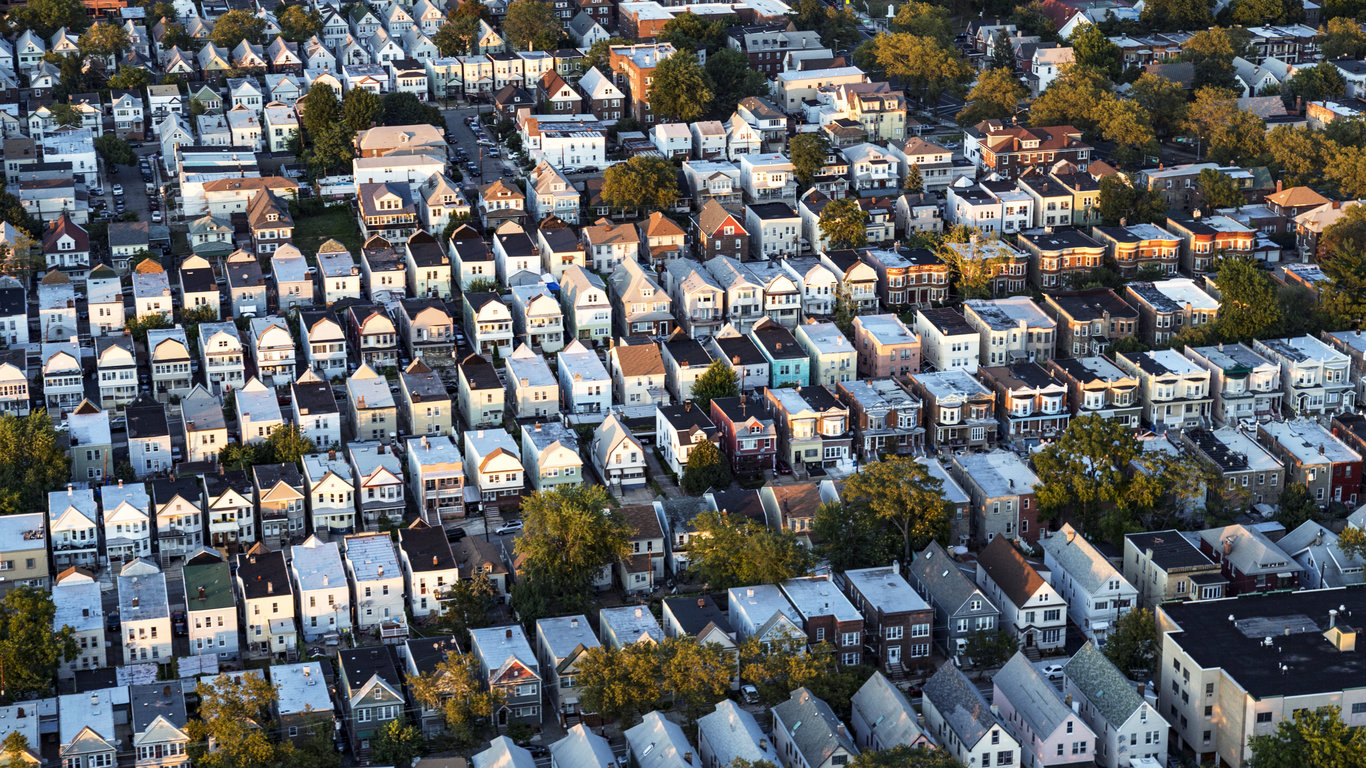
Published:
Last Updated:

The U.S. population has grown significantly since 2010, from 308 million to just over 321 million, a 13 million increase, or a 4% increase, according to the U.S. Census Bureau’s American Community Survey.
To determine the fastest growing American cities, 24/7 Tempo ranked U.S. cities by their percentage population change from 2010 to 2018, using data from the ACS. Cities with fewer than 50,000 residents in 2010 were not considered.
The population of each of the 25 cities on the list grew by more than 15% from 2010 to 2018. In four cities, the population grew by a third in that time frame. Many of these cities are clustered around large metropolitan areas.
These rapidly growing cities often represent a larger trend of people moving to their respective states or nearby metro areas because of better job opportunities, cheaper homes, better schools, or higher standards of living. The 25 fastest growing cities are spread across nine states — 11 of those cities happen to be in one state. These are the fastest growing (and shrinking) states.
Cities become appealing destinations for people to move to for a number of reasons. Some have booming job markets that attract new workers from other parts of the country or even overseas. Others have affordable housing markets that attract residents like younger people who are starting out in entry-level jobs. These are 40 places where young people are moving.
Click here to see the 25 fastest-growing U.S. cities since 2010.

25. Denton, Texas
> Population growth 2010-2018 15.6%
> Population in 2010 (Census) 113,383
> Population in 2018 (Census) 131,097
Home to University of North Texas, Denton is one of the fastest growing cities in the country. Its population has grown by more than 50,000 people between 2000 and 2018 — an increase of nearly 63%. To accommodate this growth, local governments have undertaken ambitious highway projects to combat traffic congestion along the roads connecting Denton County to the rest of the Dallas-Fort Worth metroplex.
[in-text-ad]
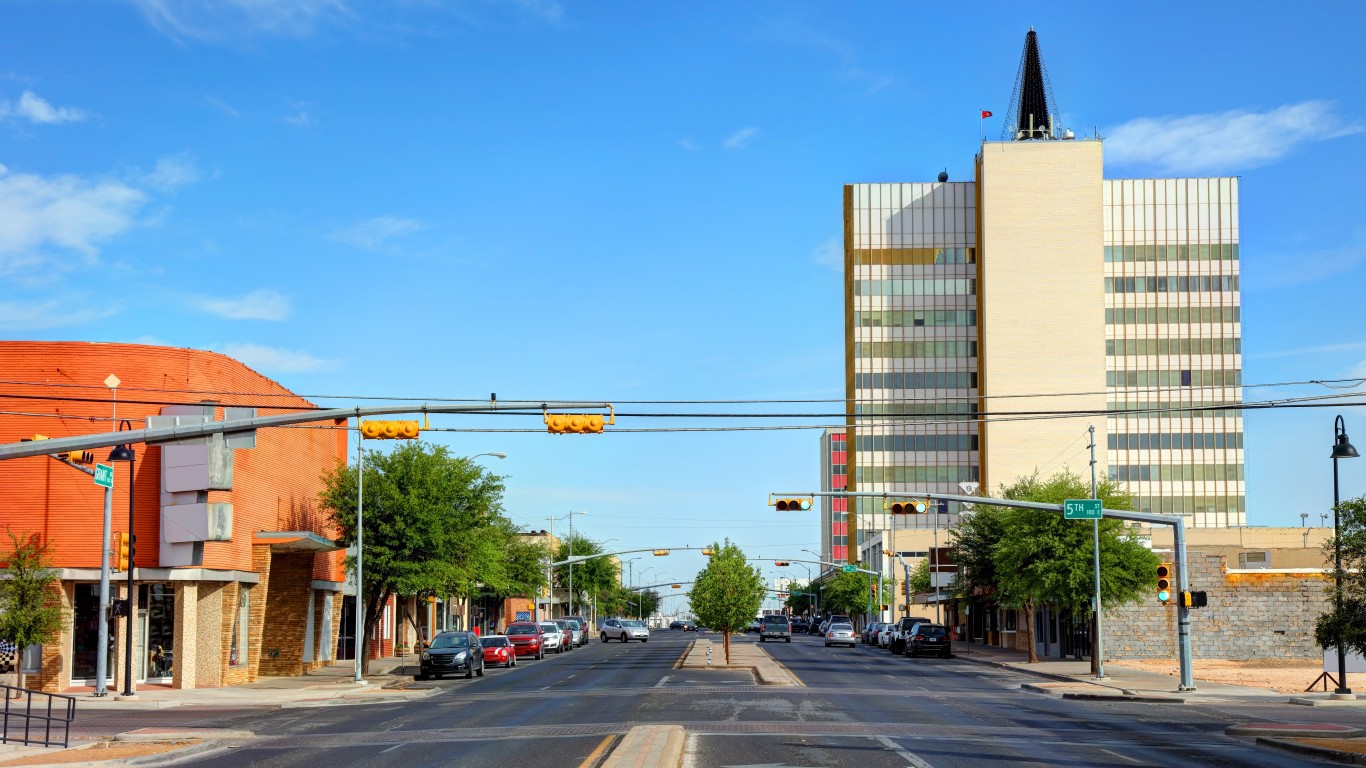
24. Odessa, Texas
> Population growth 2010-2018 16.0%
> Population in 2010 (Census) 99,940
> Population in 2018 (Census) 115,930
The city in west Texas that is located between El Paso to the west and Fort Worth to the east has seen its population swell by 16% between 2010 and 2018, at least partially because of oil and petroleum. Odessa, like Midland, Texas, is located on the Permian Basin, a 75-000-square mile region that has petroleum and natural gas deposits. The jobless rate in Odessa is 2.5%, compared with the national unemployment rate of 3.5%.
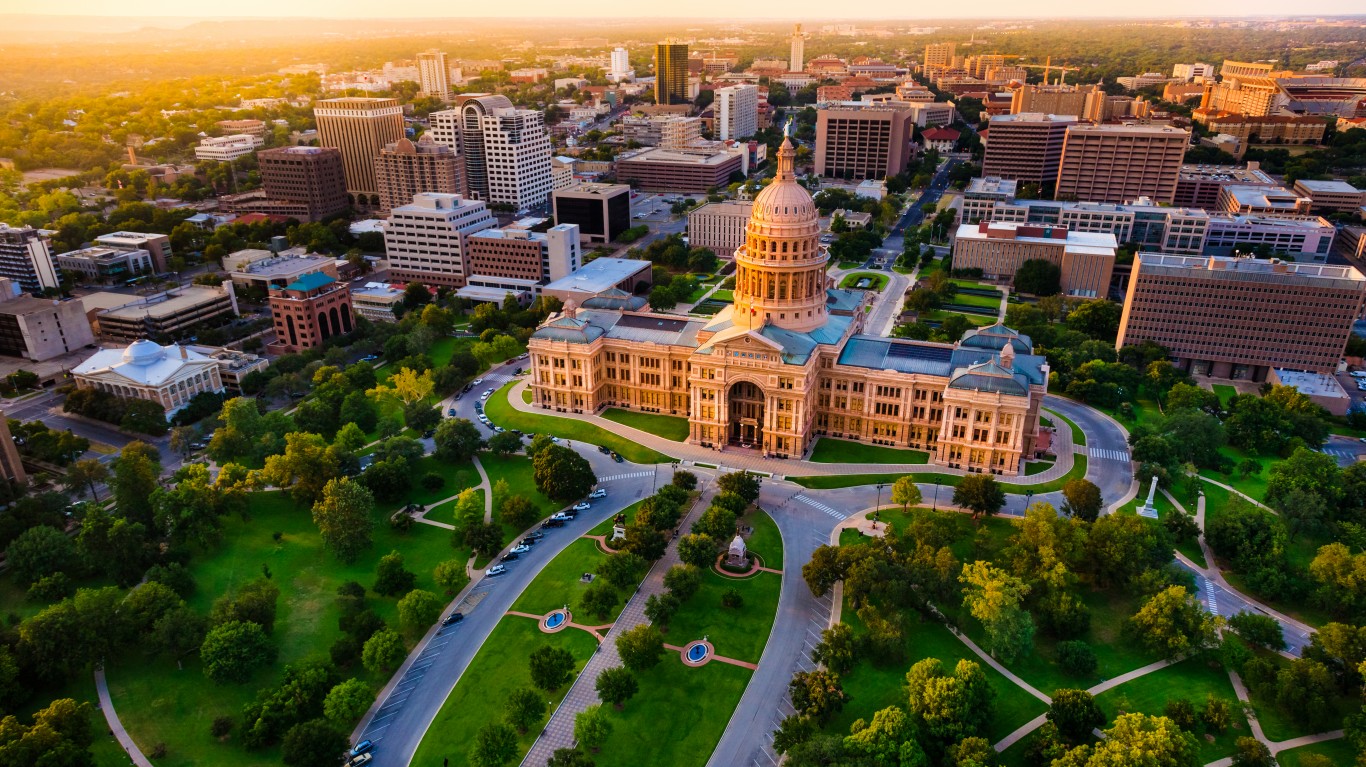
23. Austin, Texas
> Population growth 2010-2018 16.0%
> Population in 2010 (Census) 790,390
> Population in 2018 (Census) 916,906
Austin, the capital of Texas, has been growing steadily since 2000. Its population then was 656,000, increasing to 790,000 in 2010, and to 916,000 eight years later. Many of the newcomers are coming from other parts of the country attracted to a thriving job market. Some of the major companies with offices in Austin are IBM, Amazon, and Apple.
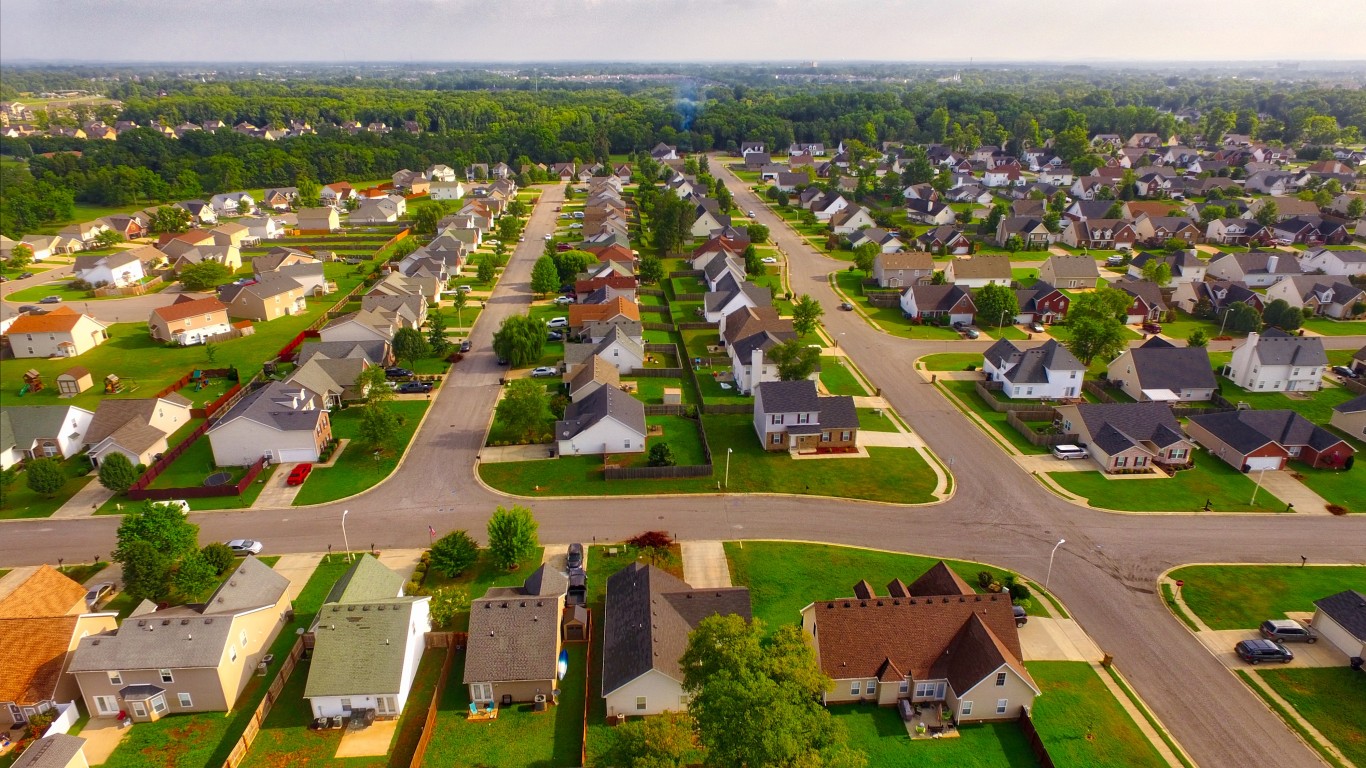
22. Murfreesboro, Tennessee
> Population growth 2010-2018 16.0%
> Population in 2010 (Census) 108,755
> Population in 2018 (Census) 126,188
Murfreesboro, Tennessee, ranks among the fastest growing cities in America, and it seems that this trend will continue. The Rutherford County Chamber of Commerce projects that Murfreesboro will continue expanding its population at a rapid pace, growing to over 153,000 residents by 2024. The city was relatively small, at fewer than 69,000 residents in 2000, but it grew by more than 40,000 people in just a decade.
[in-text-ad-2]
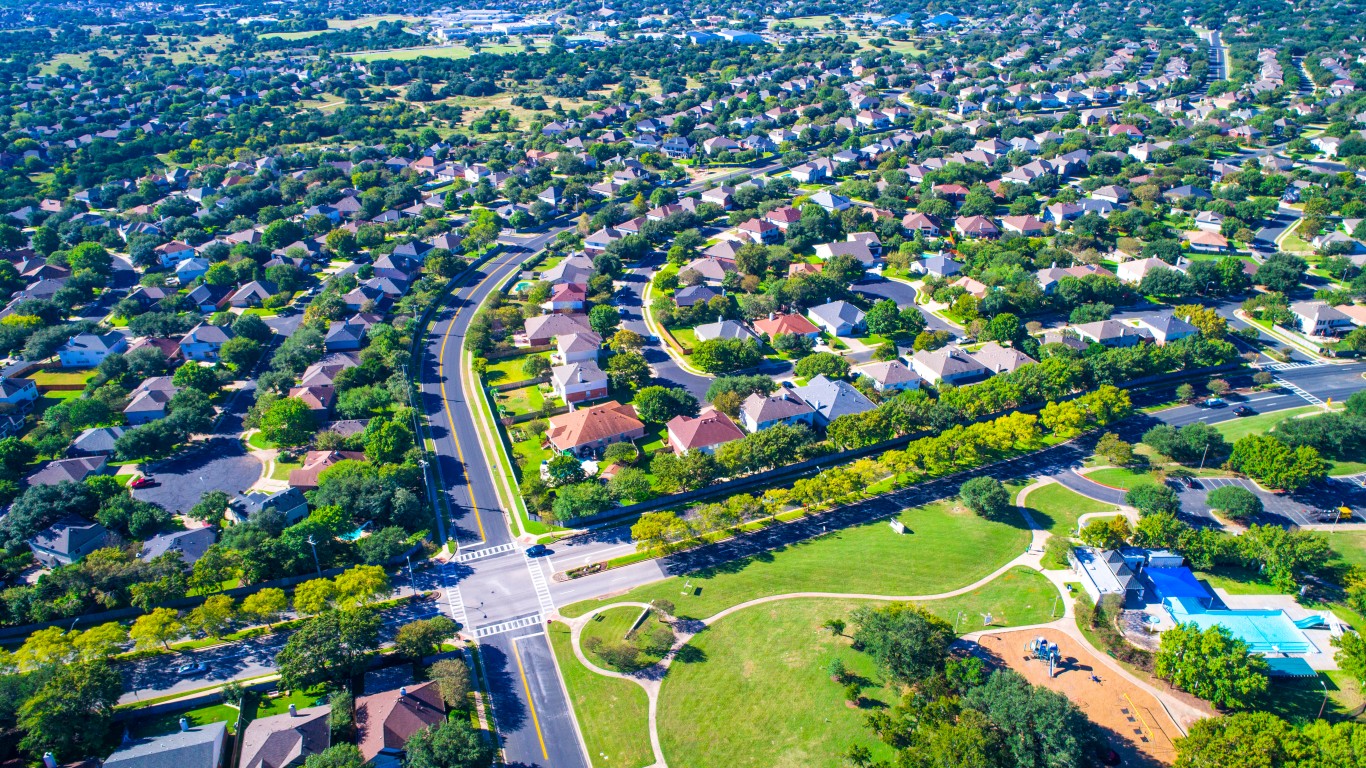
21. Round Rock, Texas
> Population growth 2010-2018 16.5%
> Population in 2010 (Census) 99,887
> Population in 2018 (Census) 116,369
Located just north of Austin in the Texas Hill Country, Round Rock is one of just 10 cities that have grown by more than 90% since 2000. The Austin-Round Rock metro area has many positive economic indicators, like a low unemployment rate and relatively high median household income. It is home to campuses of several major tech corporations like Apple and IBM, which may help explain some of the population growth.
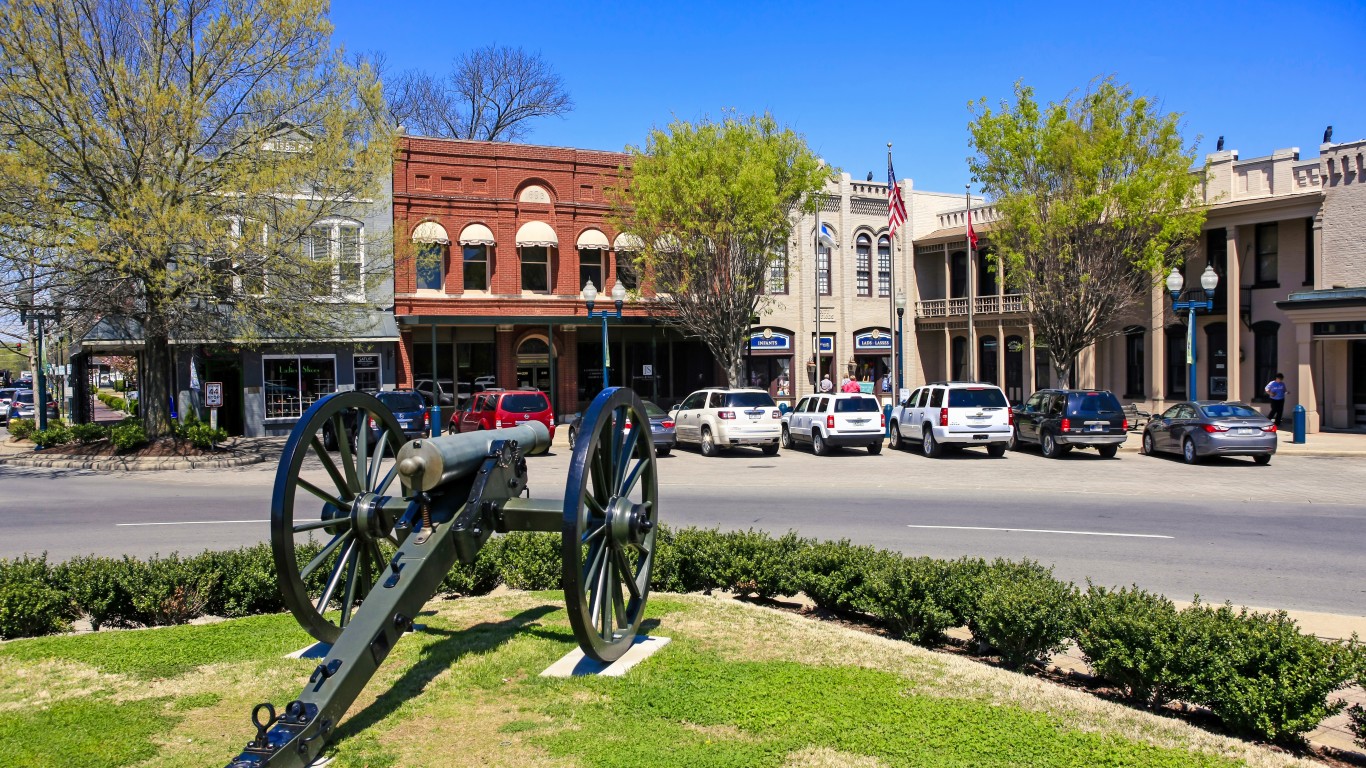
20. Franklin, Tennessee
> Population growth 2010-2018 16.8%
> Population in 2010 (Census) 62,487
> Population in 2018 (Census) 72,990
Franklin, Tennessee, is about 20 miles south of Nashville, and is a magnet for amateur Civil War historians. From July 1, 2016 to July 1, 2017 alone, the city grew 4.9%, and was the fastest growing city in Tennessee. A strong health-care sector is fueling job growth. Publications such as The Wall Street Journal and Money magazine cite the city’s robust downtown, vibrant music scene, and well-preserved Civil War battlefields among the reasons why the city is growing.
[in-text-ad]
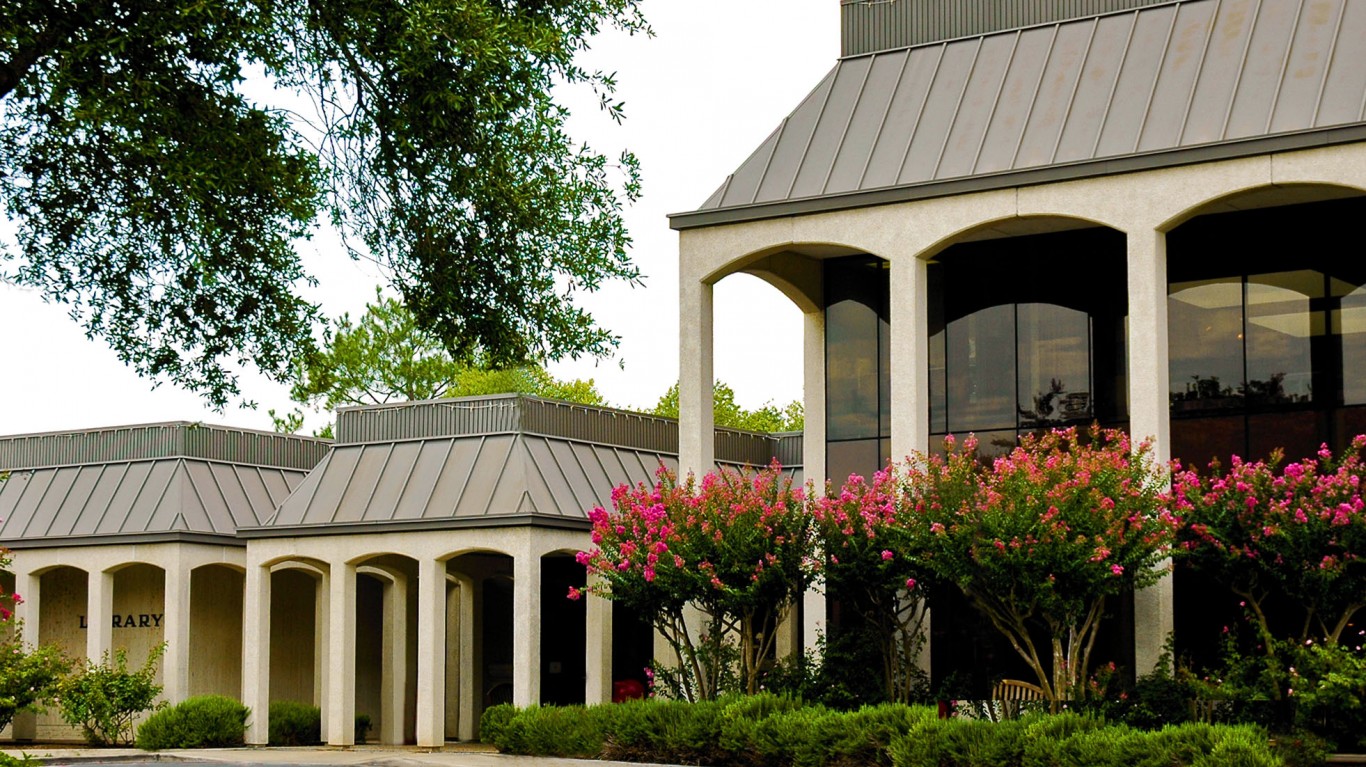
19. League City, Texas
> Population growth 2010-2018 17.5%
> Population in 2010 (Census) 83,560
> Population in 2018 (Census) 98,215
League City, Texas, is about 26 miles southeast of Houston, and is equidistant from the coastal city of Galveston to the southeast. The expanding Texas city advocates sustainable growth and promotes its recreational lifestyle and school system. Money magazine listed League City among its best small cities in America back in 2006.

18. Cary, North Carolina
> Population growth 2010-2018 18.1%
> Population in 2010 (Census) 135,234
> Population in 2018 (Census) 159,715
Cary, North Carolina, is part of the Research Triangle, an area surrounded by three major research universities. With so many skilled college graduates in the area, many agriculture, technology, and advanced manufacturing companies have started in or moved to the Triangle. This may be one of the reasons for Cary’s nearly 69% population growth from 2000 to 2018 — adding a total of more than 65,000 residents.
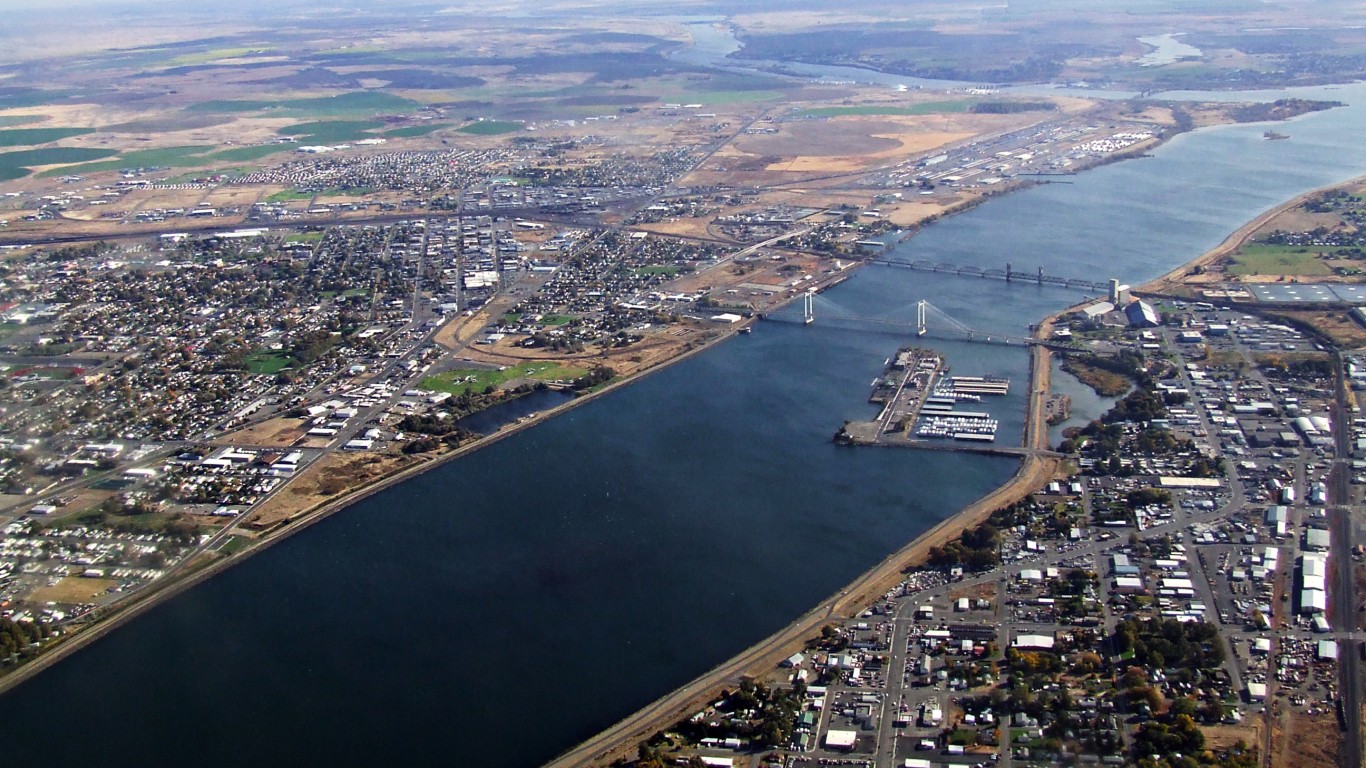
17. Pasco, Washington
> Population growth 2010-2018 18.1%
> Population in 2010 (Census) 59,781
> Population in 2018 (Census) 70,607
Pasco, located in southeastern Washington state on the Columbia River, was a key transport center for the military during World War II. The opening of the Interstate 182 bridge in 1984 was critical to access to the area. The region has long been known for agriculture and produces crops such as wheat, apples and potatoes. Major employers include such corporations as Amazon, ConAgra Foods, and Lockheed Martin.
[in-text-ad-2]

16. Midland, Texas
> Population growth 2010-2018 18.1%
> Population in 2010 (Census) 111,147
> Population in 2018 (Census) 131,286
The city, located between El Paso to the west and Fort Worth to the east, saw its population swell by more than 18% between 2010 and 2018, and some of the biggest reasons are the deposits of oil and petroleum. Midland is located on the Permian Basin, a 75-000-square mile region that has large swaths of oil and natural gas. The jobless rate in Midland is 2.0%, compared with the national unemployment rate of 3.6%. The city is experiencing growing pains such as increased traffic, banged-up roads, and climbing housing prices.
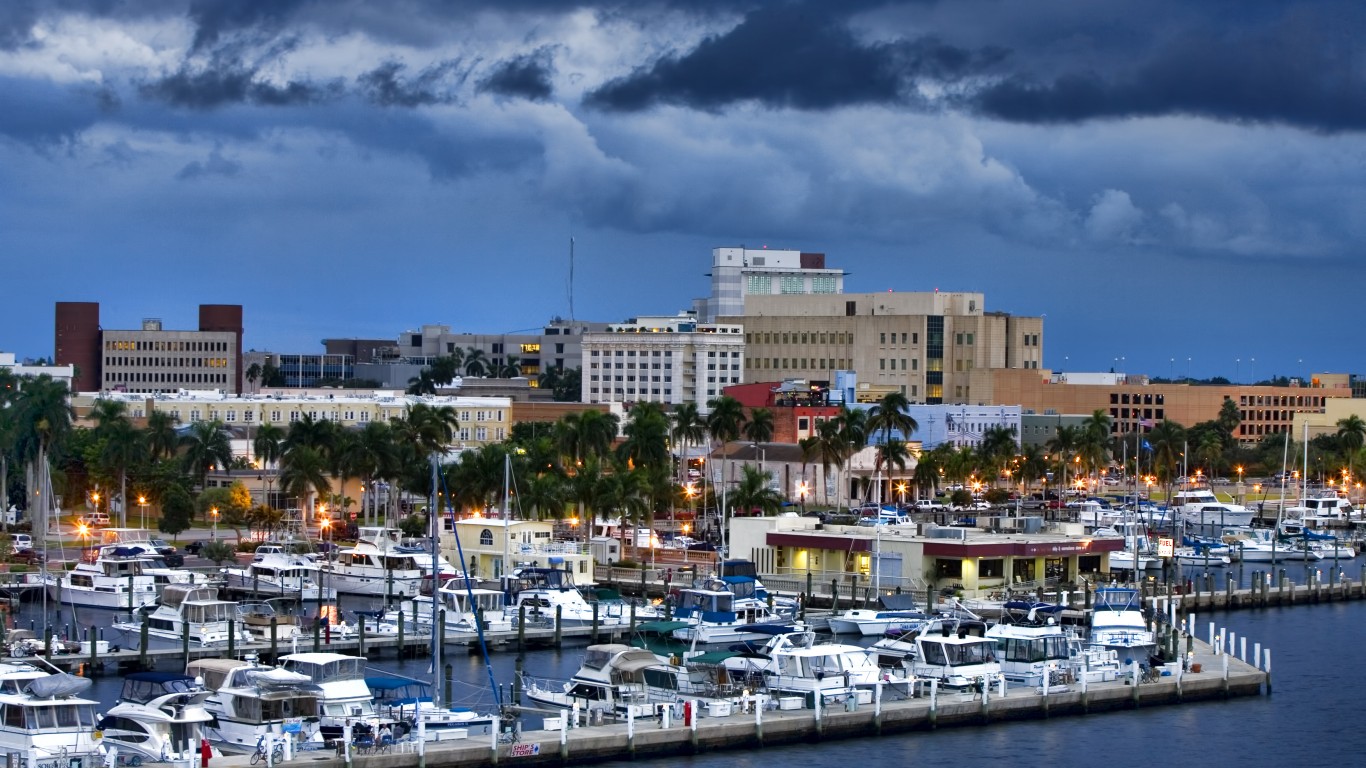
15. Fort Myers, Florida
> Population growth 2010-2018 18.3%
> Population in 2010 (Census) 62,298
> Population in 2018 (Census) 73,712
Fort Myers, Florida, one of the places hit badly by the housing crisis beginning in 2007, has resumed its growth. Fort Myers emphasizes its public amenities, cultural diversity and proactive and sustainable business environment. Retail and healthcare are the biggest employment sectors in the southwestern Florida city.
[in-text-ad]
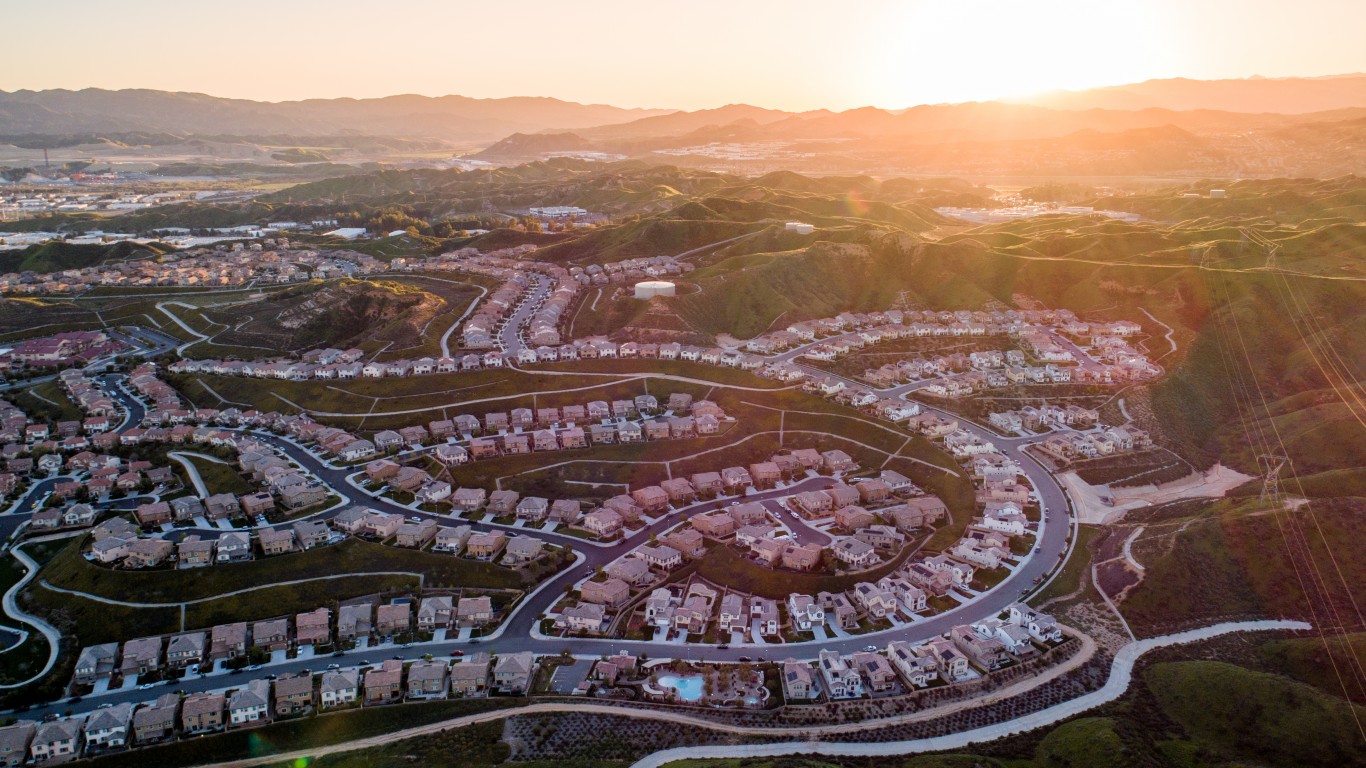
14. Santa Clarita, California
> Population growth 2010-2018 18.8%
> Population in 2010 (Census) 176,320
> Population in 2018 (Census) 209,489
Santa Clarita, California, is about 32 miles northwest of Los Angeles. The city prides itself on being ranked among the safest communities in the nation and provides economic incentives for businesses to locate there. Among the industries located in Santa Clarita are film production, aerospace manufacturing, and biomedical.
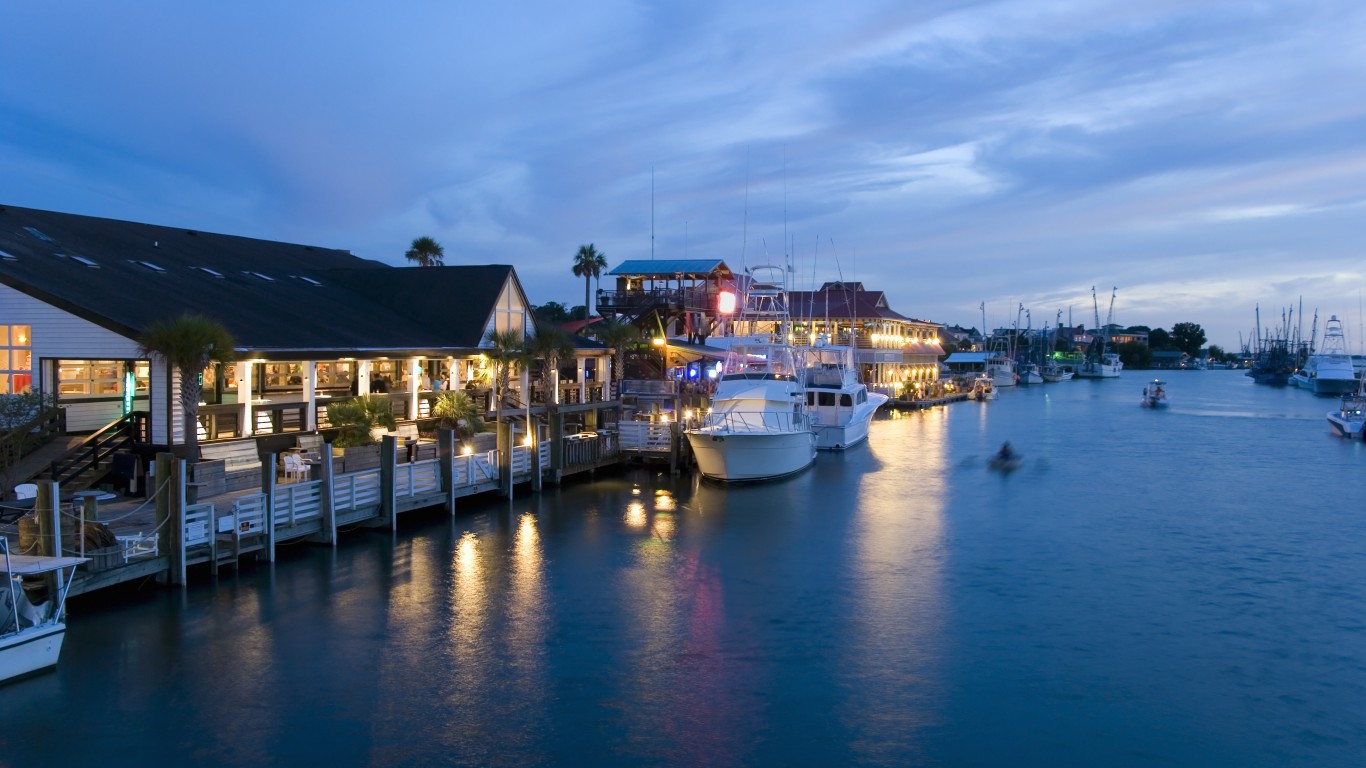
13. Mount Pleasant, South Carolina
> Population growth 2010-2018 18.9%
> Population in 2010 (Census) 67,843
> Population in 2018 (Census) 80,661
Since aerospace company Boeing opened an assembly plant in North Charleston, South Carolina in 2009, Mount Pleasant, 19 miles to the east, has felt the aftershocks. Population has soared, rents have increased, and home prices have leaped. Residents have become concerned about too much growth and Mount Pleasant has placed a moratorium on apartment construction. The jobless rate in Mount Pleasant fell to 1.2% in September from 4.5% in January 2015.
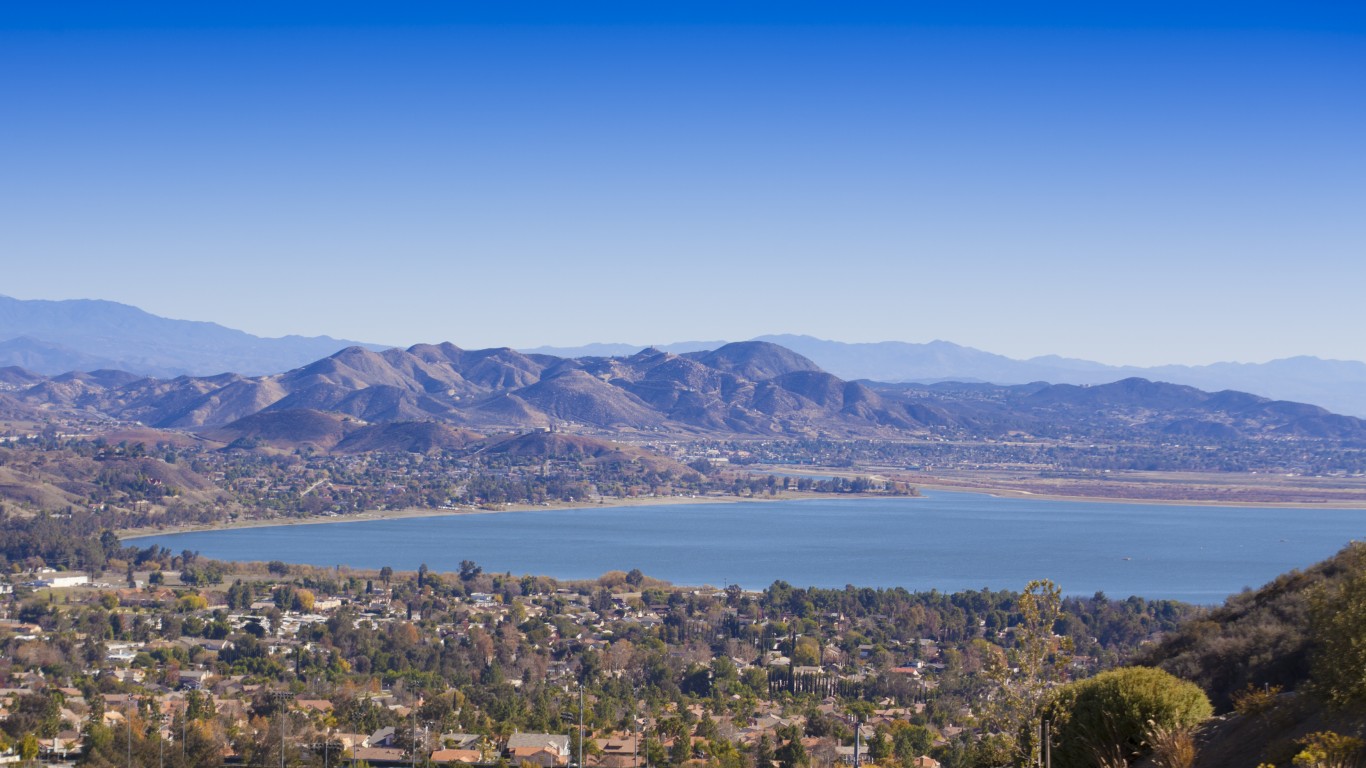
12. Lake Elsinore, California
> Population growth 2010-2018 20.1%
> Population in 2010 (Census) 51,821
> Population in 2018 (Census) 62,229
Lake Elsinore, California, makes business outreach a priority., Located 69 miles southeast of Los Angeles on a 3,000-acre freshwater lake, the city was a resort destination beginning in the late 19th century. It touts its access to freeways, availability of industrial and commercial land, and outreach to businesses. An economic development plan crafted in 2015 said in order for Lake Elsinore to boost is potential, it had to increase access to the lake; add office, health care and industrial space; and open more restaurants.
[in-text-ad-2]
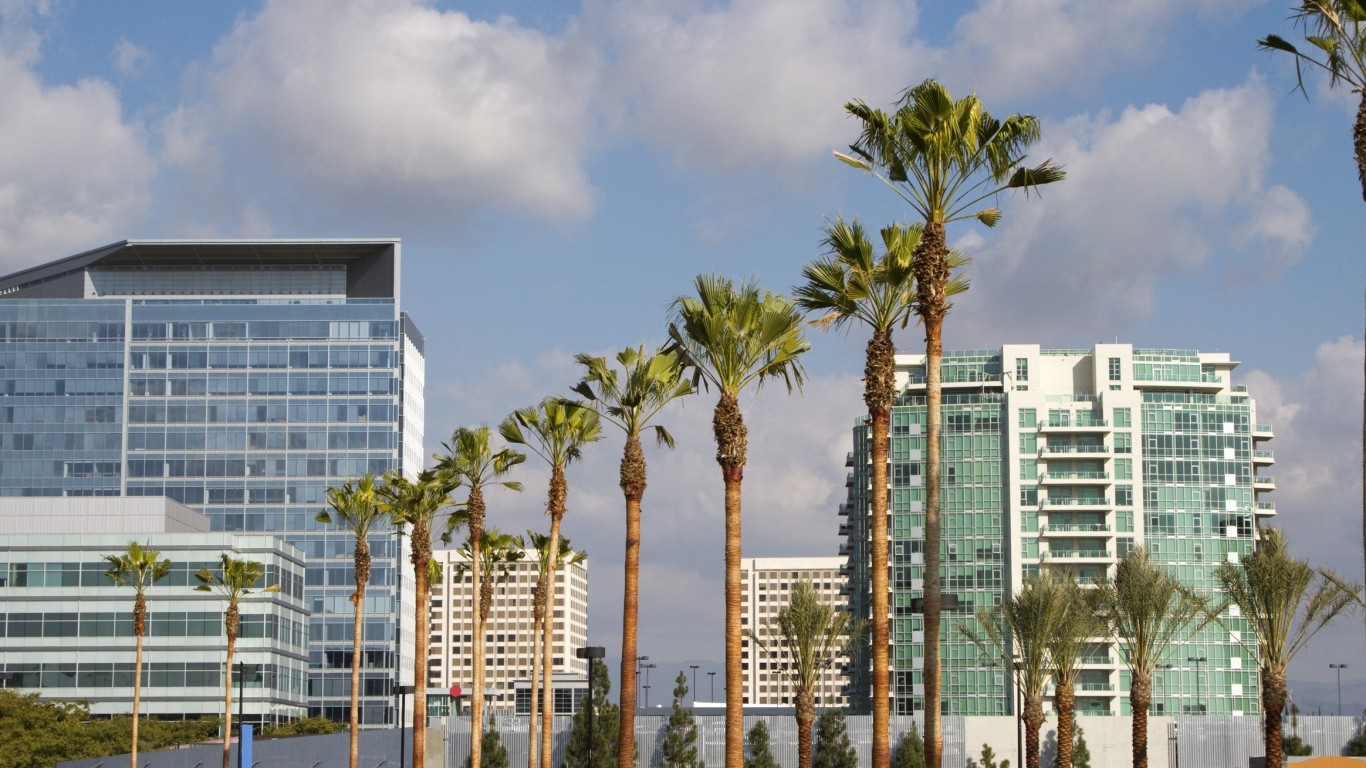
11. Irvine, California
> Population growth 2010-2018 21.0%
> Population in 2010 (Census) 212,375
> Population in 2018 (Census) 256,877
Irvine was already a large city in 2000, with over 143,000 residents. Young adults, those aged 21 to 34 years old, comprise a growing share of the population at nearly 25%. The population boom in Irvine, as well as much of the surrounding Southern California area, has been spurred by international immigration, according to the Southern California Association of Governments.
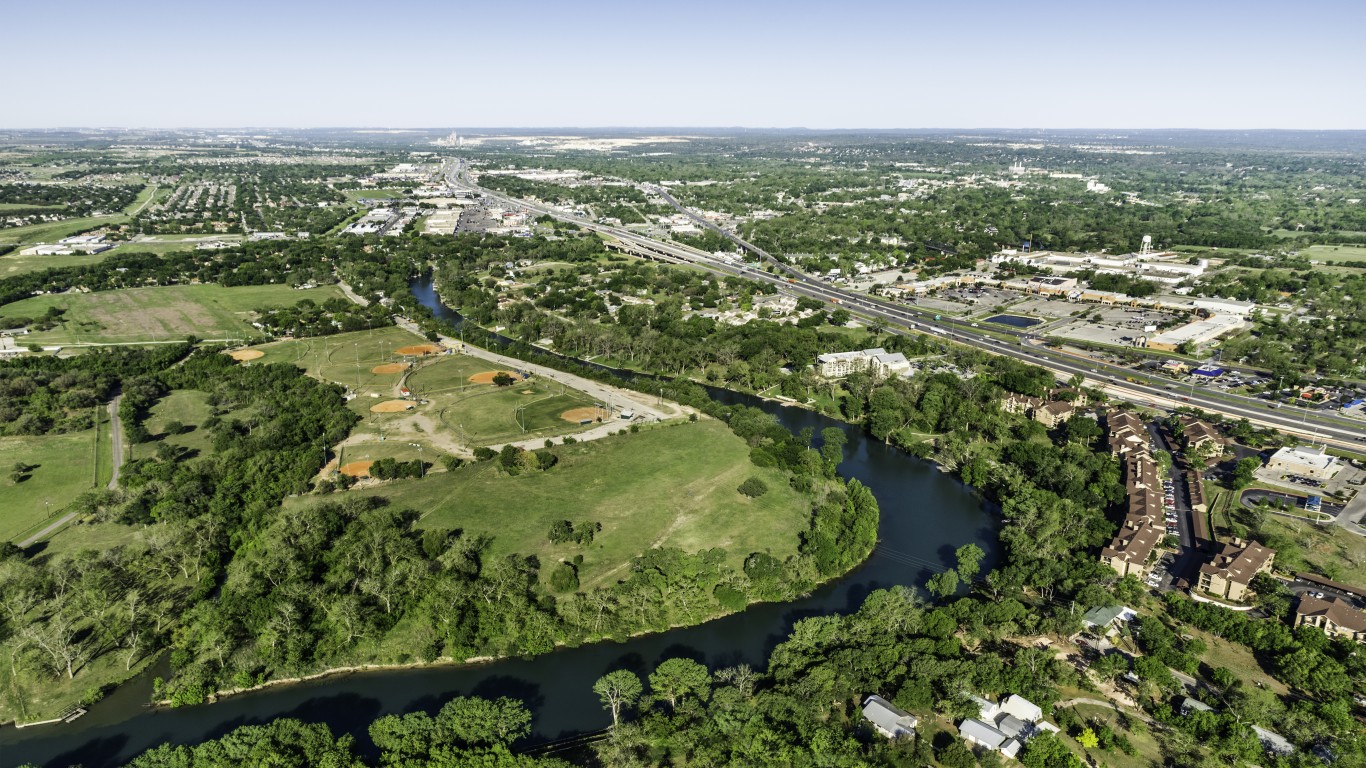
10. New Braunfels, Texas
> Population growth 2010-2018 21.8%
> Population in 2010 (Census) 57,740
> Population in 2018 (Census) 70,317
New Braunfels is part of the San Antonio-New Braunfels metro area. The city continues to be among the fast-growing cities in America, nearly doubling in size since 2000, where the local population was about 37,000. Growth has slowed down a little with about 13,000 new residents moving in over the last eight years. The metro area is among the cheapest places where people want to live right now, with a cost of living 5.6% less than the national average and a median household income of over $57,000.
[in-text-ad]
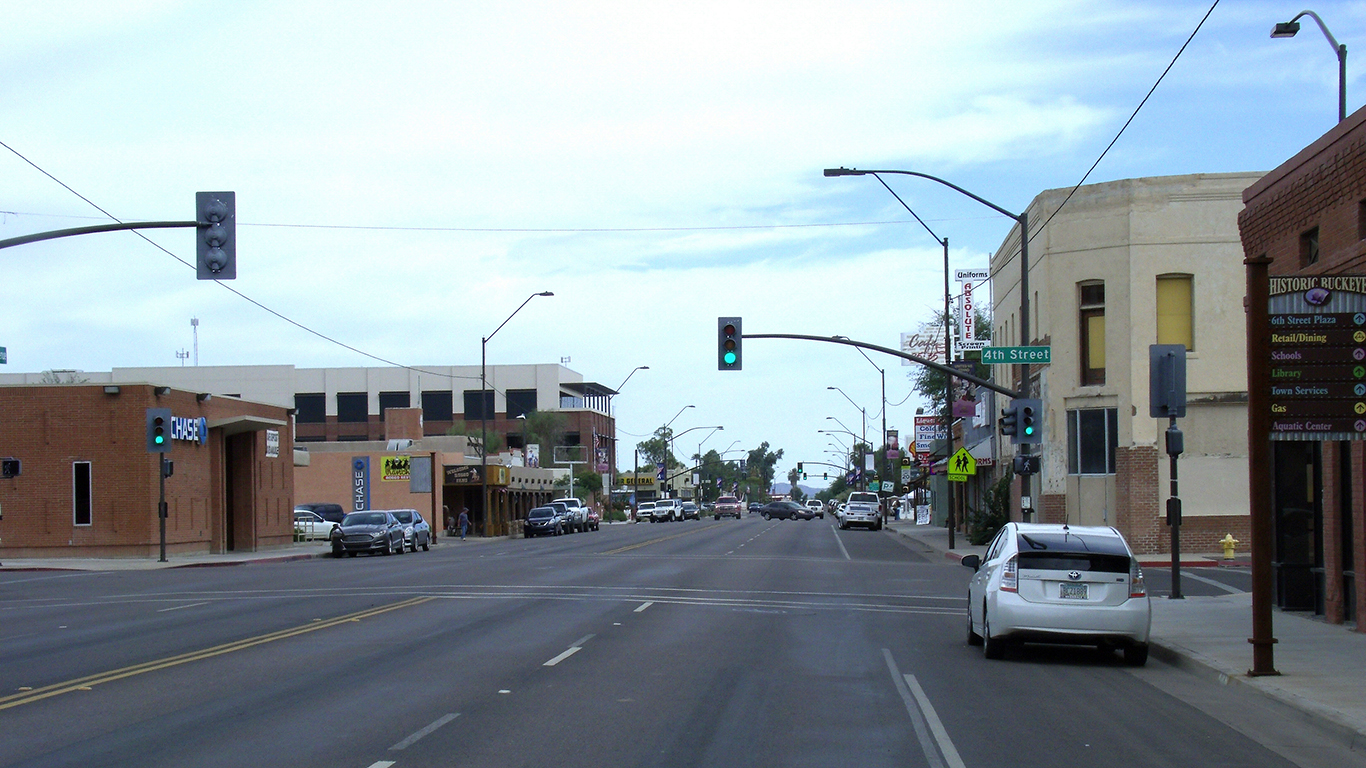
9. Buckeye, Arizona
> Population growth 2010-2018 22.0%
> Population in 2010 (Census) 50,876
> Population in 2018 (Census) 62,090
Buckeye, a city and a rural community just a few miles from Phoenix, Arizona, had just over 6,500 people calling it home in 2000. The city continues to grow considerably, at least partially due to affordable housing and great public schools. Some newcomes like the fact that Buckeye is still a small town compared with major cities in Arizona and thus it’s quieter and the air is cleaner. Buckeye is growing so fast, locals have started to complain that the city can’t keep up with the infrastructure.
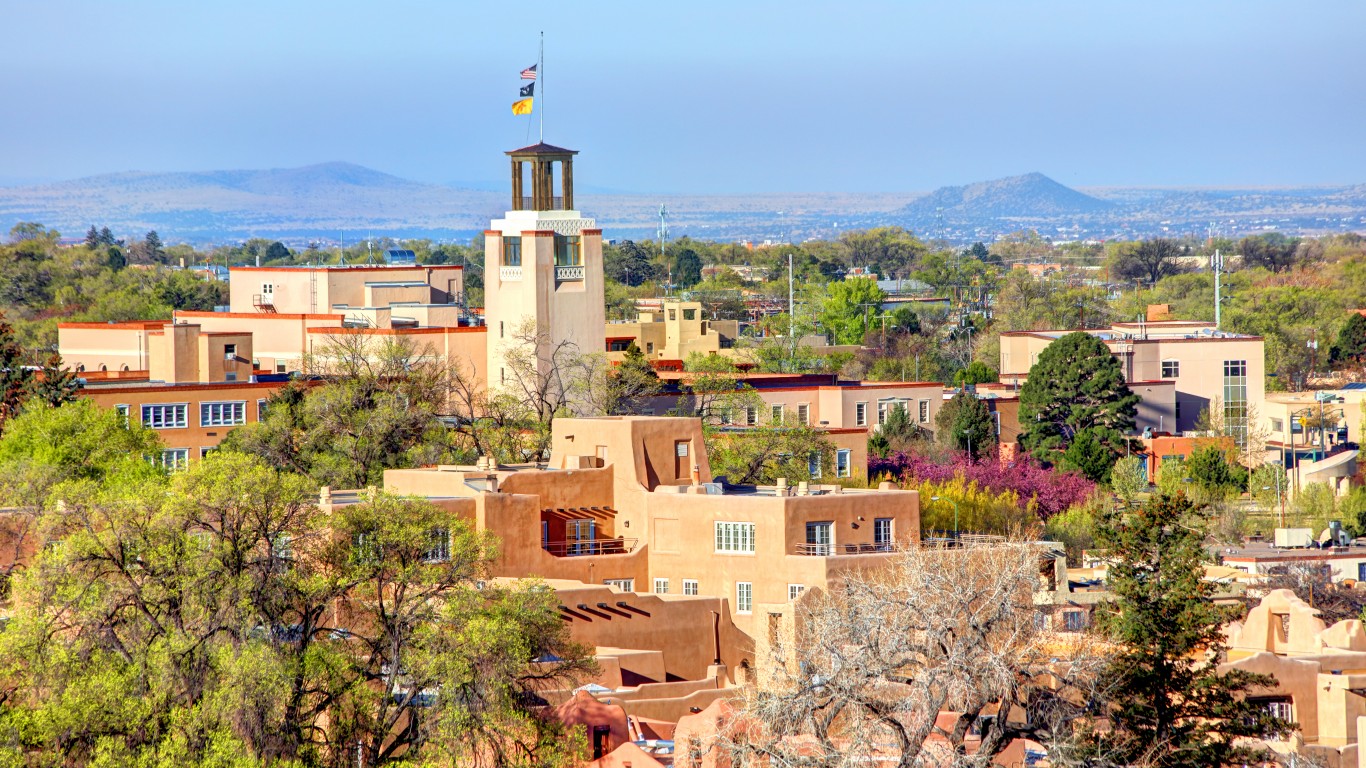
8. Santa Fe, New Mexico
> Population growth 2010-2018 22.1%
> Population in 2010 (Census) 67,947
> Population in 2018 (Census) 82,980
Unlike most cities on this list, the population of Santa Fe, New Mexico, grew significantly more between 2010 and 2018 than in the previous 10 years. Between 2000 and 2010, the number of residents increased from 62,000 to almost 68,000; from 2010 until 2018, however, the population grew to nearly 83,000. The largest driver of growth is domestic migration. Possible reasons for people to choose Santa Fe as their new home include its higher standard of living — incomes tend to be higher than the average statewide. The typical metro area household earns $58,821 a year, about $12,000 more than the median income of $46,744 across New Mexico.
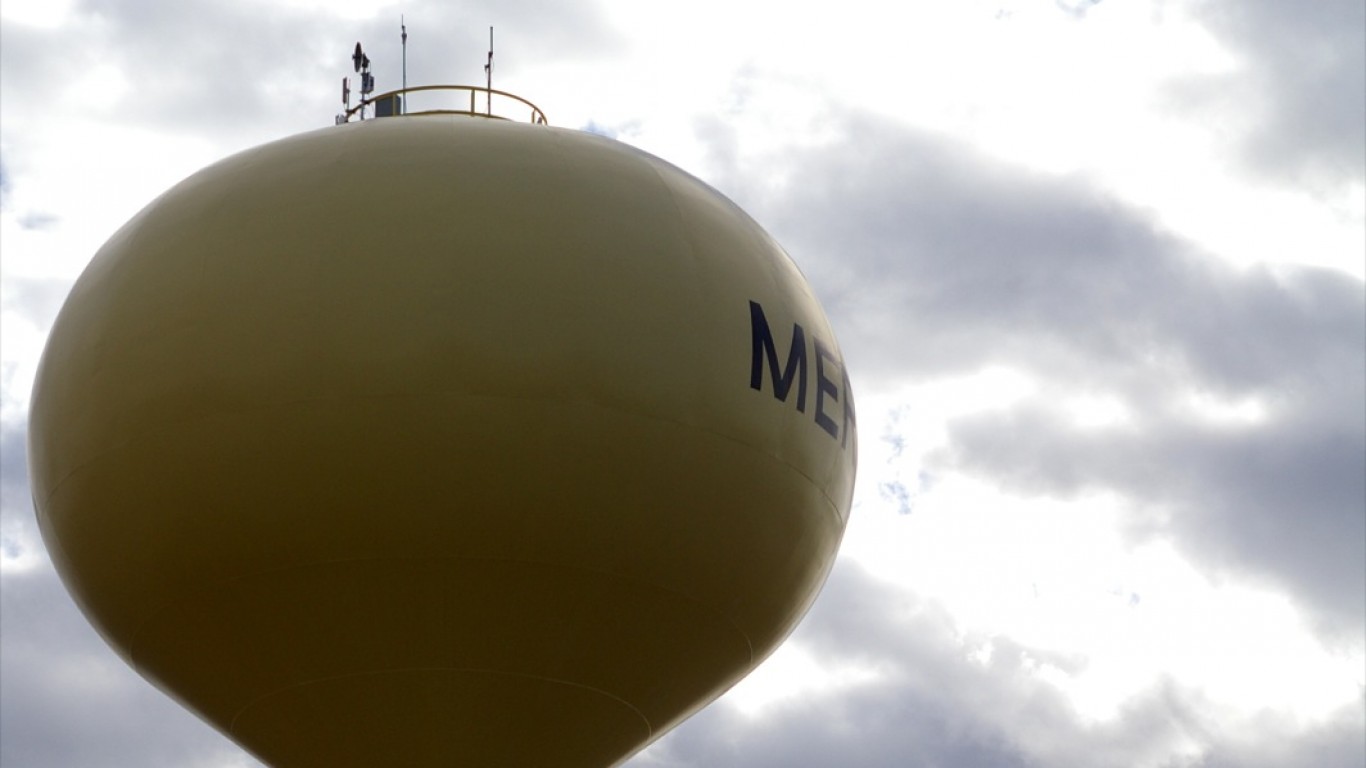
7. Meridian, Idaho
> Population growth 2010-2018 22.4%
> Population in 2010 (Census) 75,092
> Population in 2018 (Census) 91,917
The population of Meridian, which is about 12 miles west of Boise, Idaho, has almost tripled since 2000, when nearly 35,000 lived there. Most of the population increase occurred between 2000 and 2010, when about 35,000 people moved to the city. Since 2010, approximately 15,000 new residents have called Meridian their home. People are moving there for a few reasons — low cost of living, family-friendly environment, and, because of its location, an abundance of recreation options.
[in-text-ad-2]
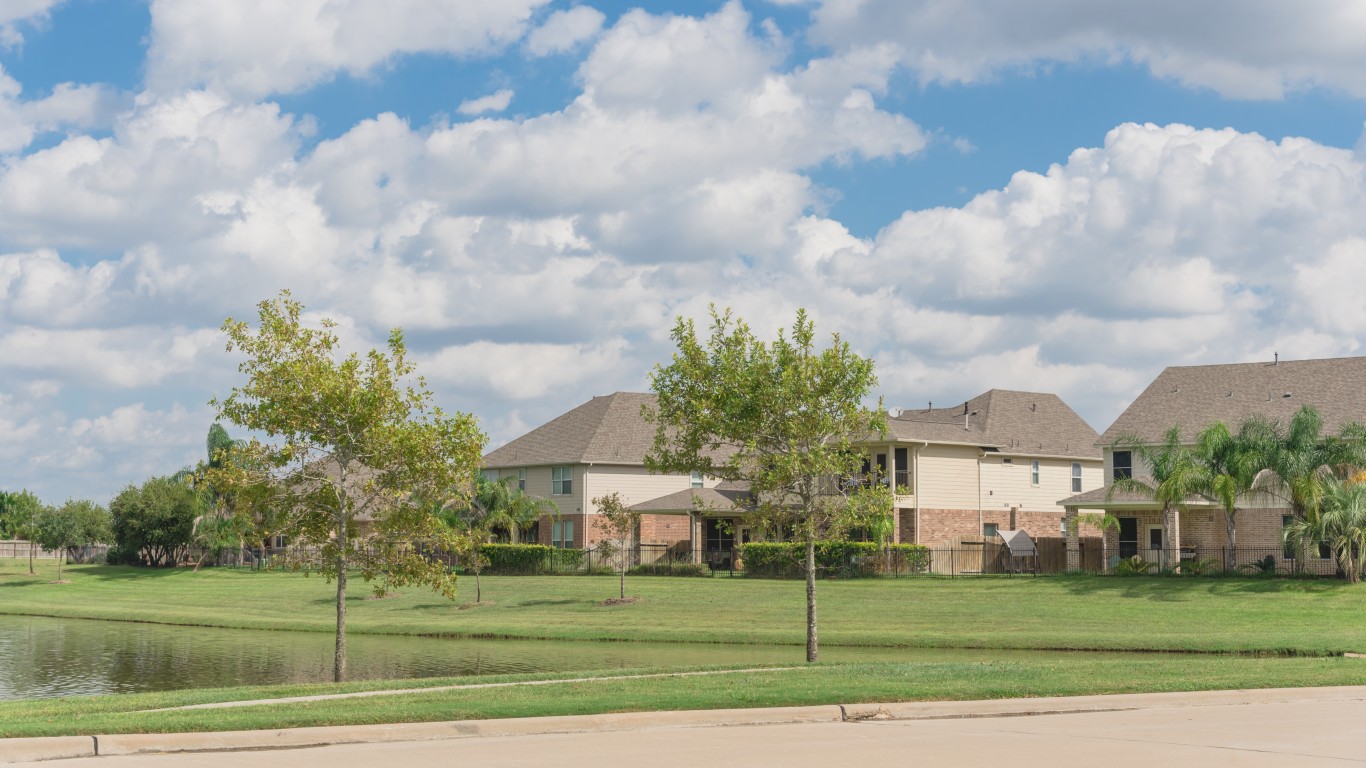
6. Pearland, Texas
> Population growth 2010-2018 24.6%
> Population in 2010 (Census) 91,252
> Population in 2018 (Census) 113,693
The population of Pearland, Texas, a suburb of Houston, has almost quadrupled since 2000, exploding from 37,640 people to about 91,000 in 2010 and up to almost 114,000 in 2018. The city has been ranked among the safest in the Lone Star state. Affordable cost of living as well as proximity to Houston make it desirable to newcomers.
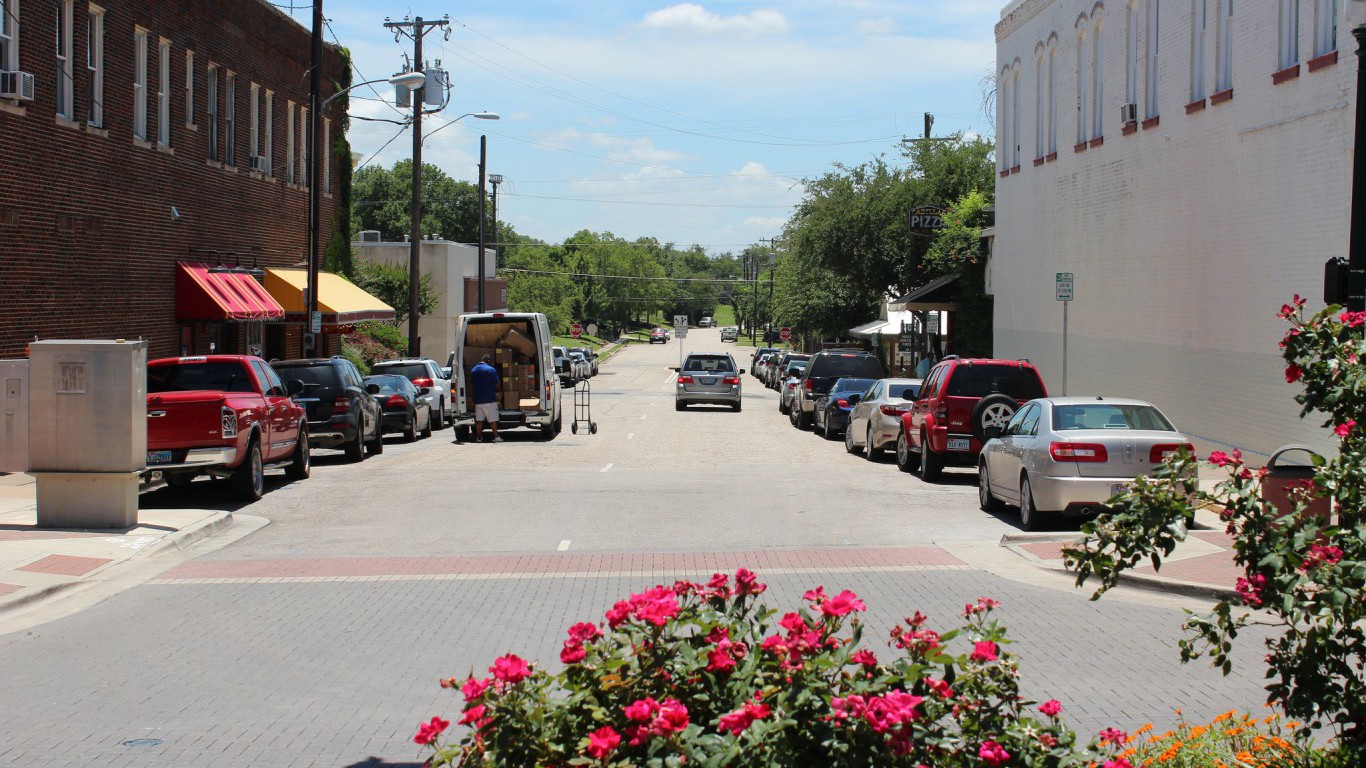
5. McKinney, Texas
> Population growth 2010-2018 25.7%
> Population in 2010 (Census) 131,117
> Population in 2018 (Census) 164,760
McKinney more than tripled in size between 2000 and 2018. This Dallas-area suburb had by far the largest growth by percentage of any large city. Like many other cities on this list, McKinney experienced a large population boom — adding over 75,000 residents — from 2000 to 2010, but growth has since leveled off. While the population increase of over 33,000 people from 2010 to 2018 is significant, it is nowhere near the level of the previous decade.
[in-text-ad]
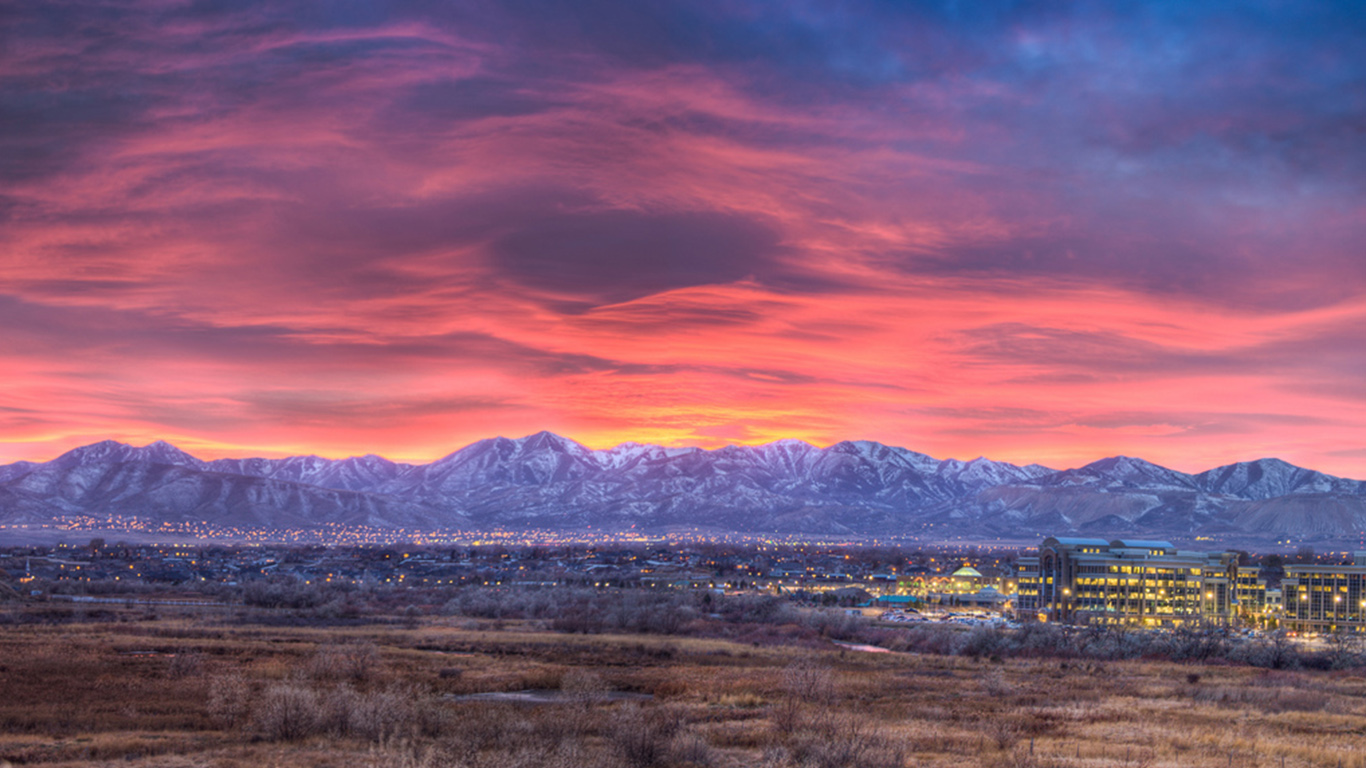
4. South Jordan, Utah
> Population growth 2010-2018 30.0%
> Population in 2010 (Census) 50,418
> Population in 2018 (Census) 65,523
With a population of 50,418 in 2010, South Jordan, Utah, is one of the smallest cities on this list, barely making the cutoff for consideration. Over the last decade, the city’s population grew by a third to more than 65,000 people. Some newcomers prefer South Jordan because it’s small, quiet, safe and affordable. South Jordan also has low poverty and unemployment rates.
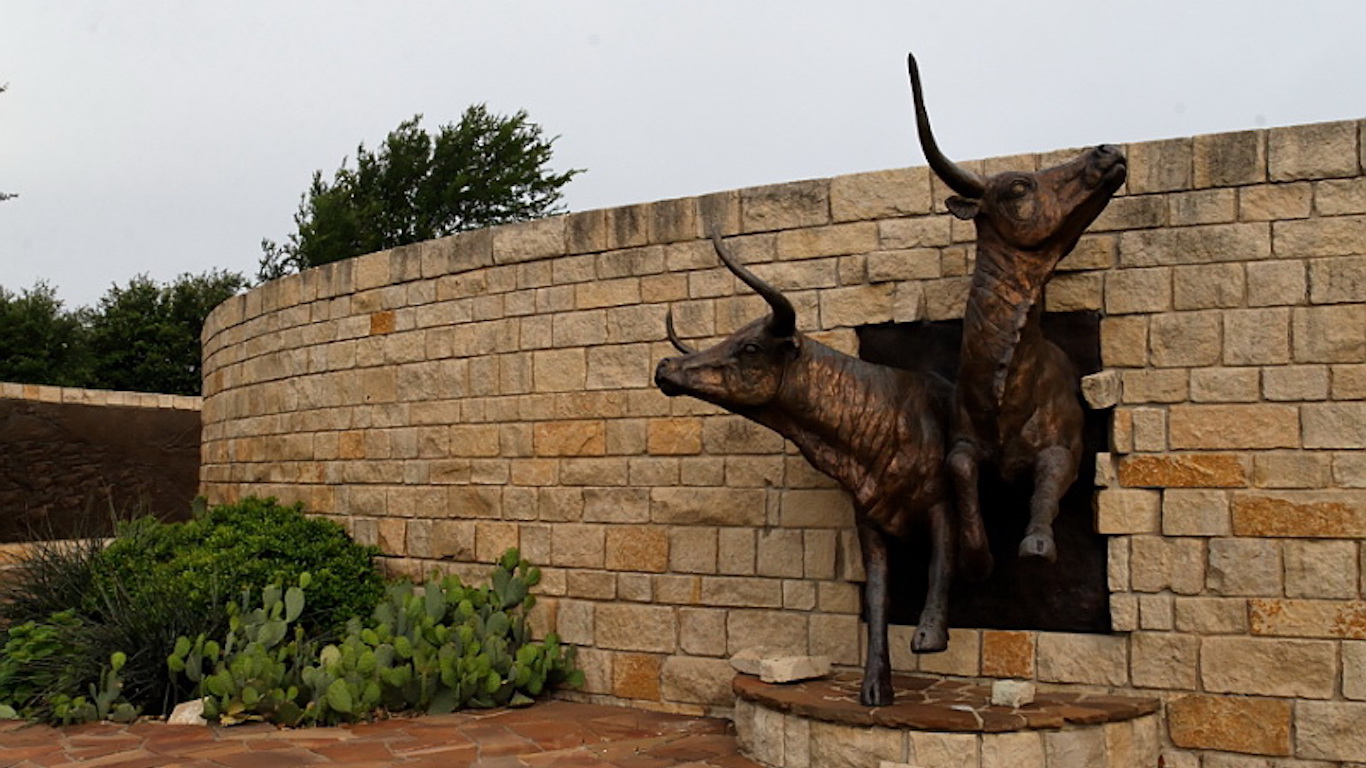
3. Frisco, Texas
> Population growth 2010-2018 32.8%
> Population in 2010 (Census) 116,989
> Population in 2018 (Census) 155,363
Frisco’s population was only 33,714 in 2000. By 2010, nearly 117,000 people had moved there. Though the population expansion has slowed since, the city is still among the fast-growing in the country. One reason why people are moving to this suburb of the Dallas metro area is the fact that it’s among the safest cities in the country, with just over 86 violent crimes per 100,000 residents in 2018. Frisco was named the best place to live in 2018 by CNN Money and realtor.com, partially for the city’s good public schools.
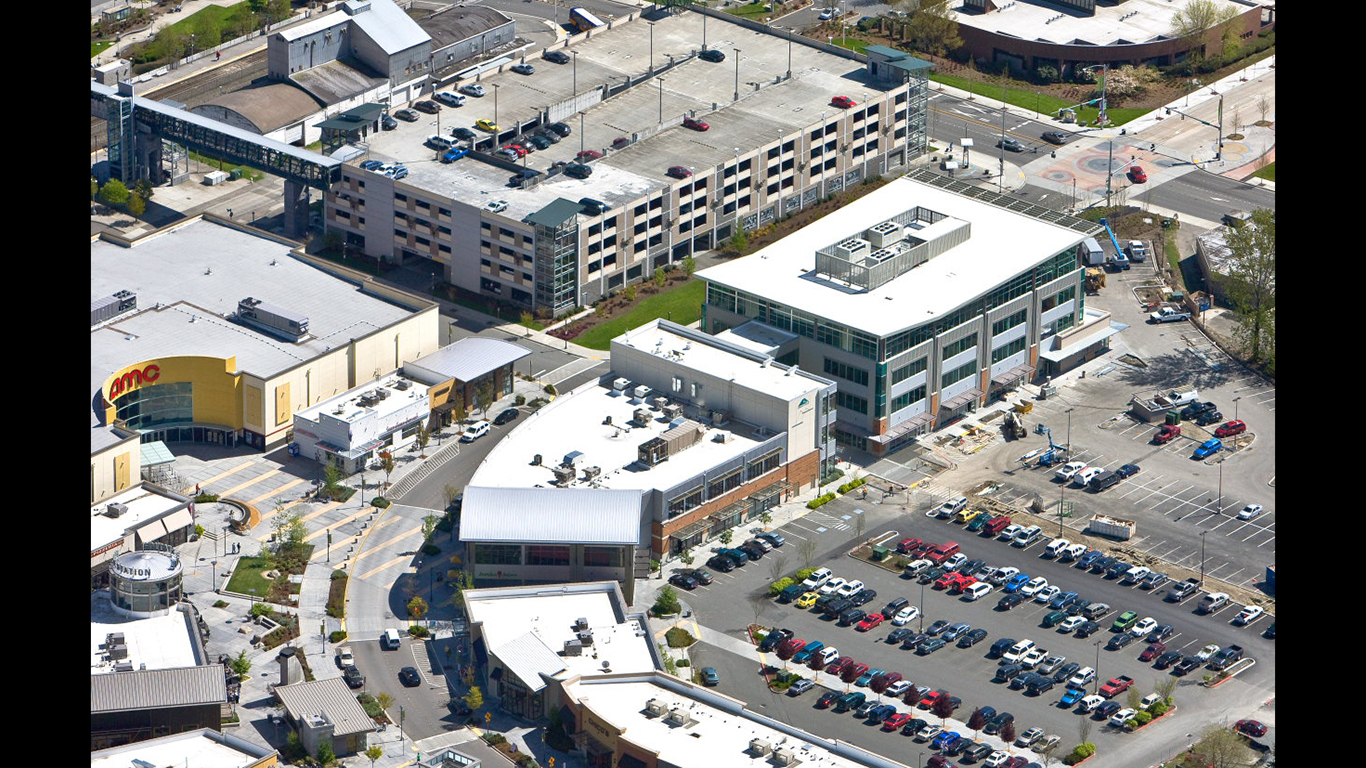
2. Kent, Washington
> Population growth 2010-2018 37.0%
> Population in 2010 (Census) 92,411
> Population in 2018 (Census) 126,561
Kent is the sixth biggest city in Washington state and its population keeps growing considerably, especially since 2010. Kent’s population was almost 80,000 in 2000, growing to 92,000 in 2010 and exploding to more than 126,000 eight years later. Some people like it because it’s close to two major cities — Seattle and Tacoma — and boasts affordable housing.
[in-text-ad-2]
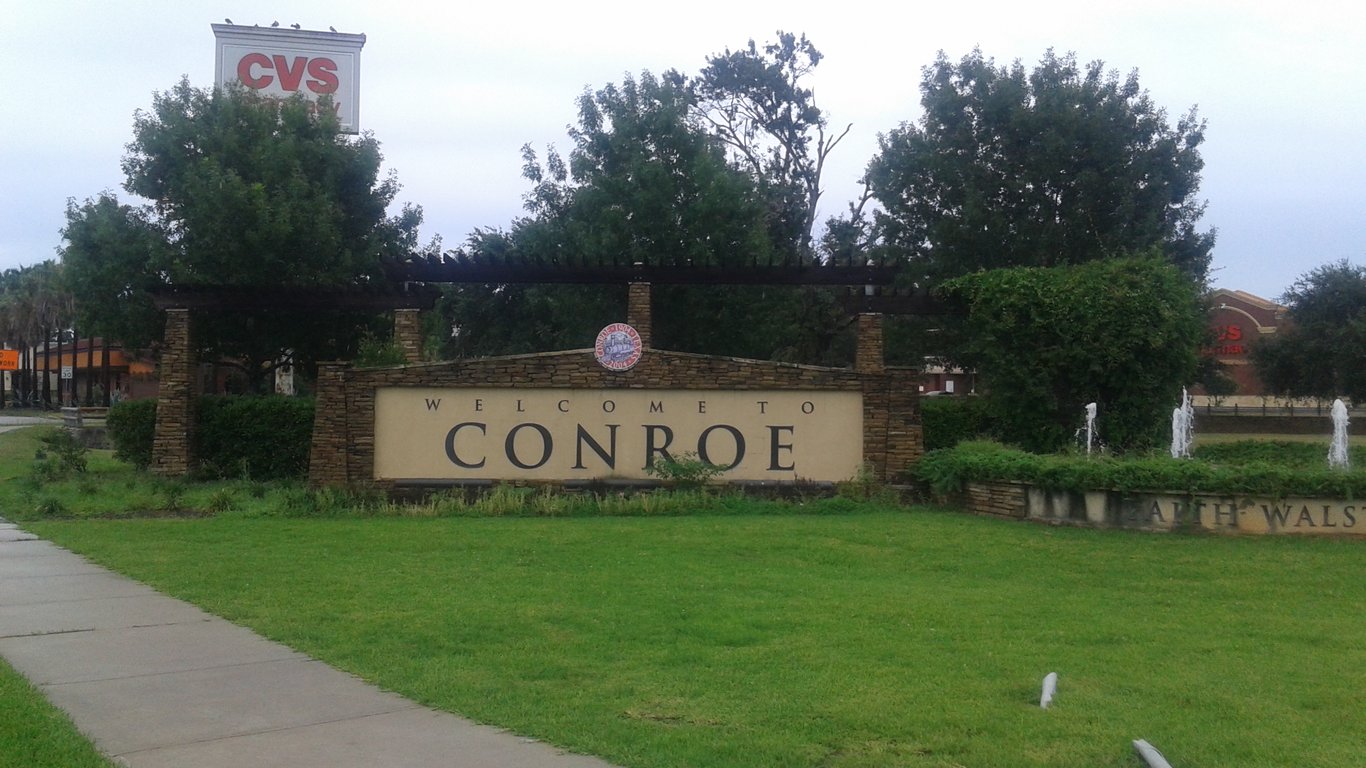
1. Conroe, Texas
> Population growth 2010-2018 37.1%
> Population in 2010 (Census) 56,207
> Population in 2018 (Census) 77,086
Conroe — one of 11 cities in Texas on this list — more than doubled in size since 2000, going from nearly 37,000 to more than 77,000. The population growth slowed down a little bit at the turn of the decade, with just about 20,000 making this city about 40 miles from north of Houston their new home since 2010. Some reasons why people move there are cheaper and newer homes, as well as being closer to nature. City officials expect Conroe to hit 100,000 residents by 2020.
The average American spends $17,274 on debit cards a year, and it’s a HUGE mistake. First, debit cards don’t have the same fraud protections as credit cards. Once your money is gone, it’s gone. But more importantly you can actually get something back from this spending every time you swipe.
Issuers are handing out wild bonuses right now. With some you can earn up to 5% back on every purchase. That’s like getting a 5% discount on everything you buy!
Our top pick is kind of hard to imagine. Not only does it pay up to 5% back, it also includes a $200 cash back reward in the first six months, a 0% intro APR, and…. $0 annual fee. It’s quite literally free money for any one that uses a card regularly. Click here to learn more!
Flywheel Publishing has partnered with CardRatings to provide coverage of credit card products. Flywheel Publishing and CardRatings may receive a commission from card issuers.
Thank you for reading! Have some feedback for us?
Contact the 24/7 Wall St. editorial team.